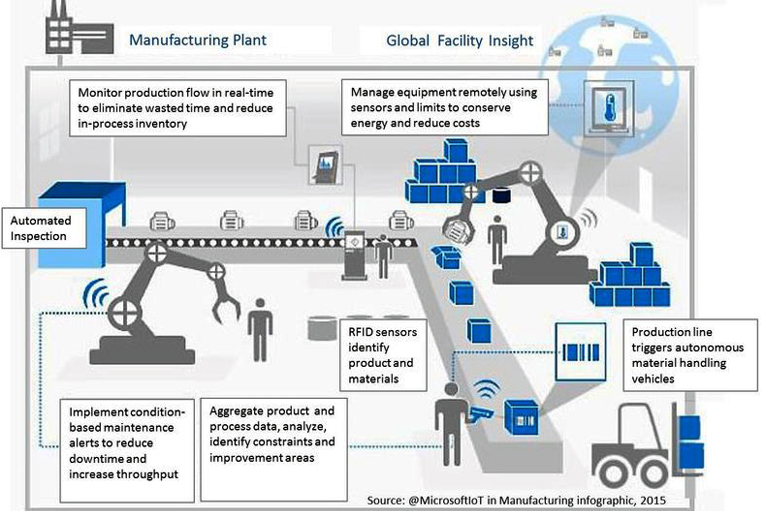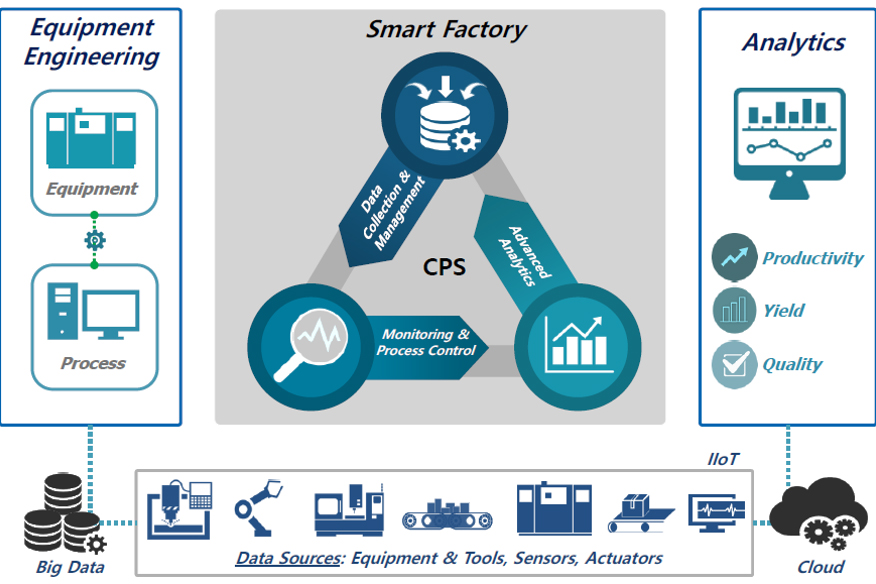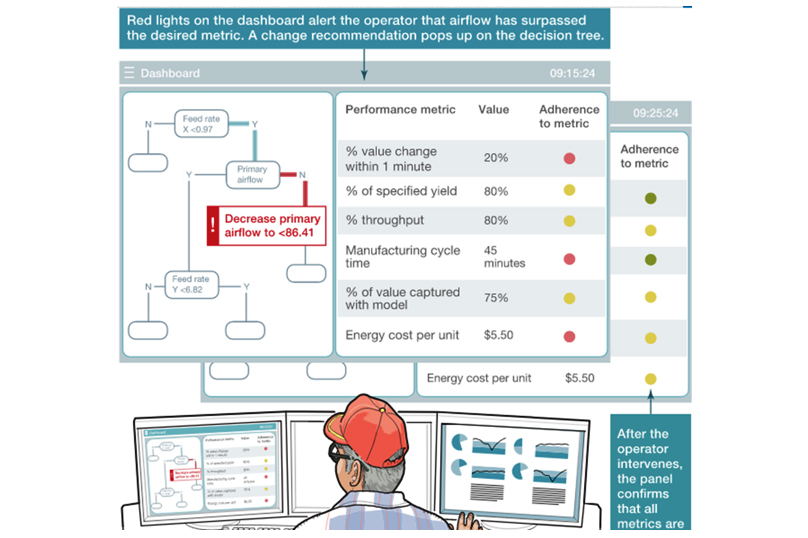The genius of the lean manufacturing system is in identifying the seven types of waste typically found in a manufacturing environment: transport, inventory, motion, waiting, overproduction, overprocessing and defects.
Although technologies have changed since 1980, when lean was first popularized via Toyota and engineer Taiichi Ohno, these same wastes potentially exist in any modern factory and there’s still a need to minimize them to the greatest extent possible. Lean may have started out as a means to reduce waste, but now it’s the precursor for setting up the intelligent systems of Industry 4.0. Here’s how it works.

5S kaizen practices are the heart of a lean system. There are a few different ways to translate the terms for your business, but let’s say Set, Shine, Sort, Standardize and Sustain. Practice this every day, with every team member, and you’re already well on the way towards curtailing the most obvious and easily preventable types of waste. You will also be laying the foundation for perhaps the most critical, and yet easily overlooked, factor in any lean management system: changing the culture.
No program, plan or methodology is going to work unless the people using it make it a habit. 5S and lean practices must become the daily culture until they’re second nature. That takes time, discipline and leadership throughout the organization.
Next, define value as any step that improves a product and for which the customer is willing to pay. Then, use value stream mapping to graphically represent how your factory is laid out right now, with standard symbols to indicate movement, storage, processing, measurement, shipment, etc. This map can help you identify waste in your current set up.
A good map doesn’t just tell you where you are but where you want to go. A value stream map should be used to guide you towards a more ideal, rational set-up of your physical space that helps to reduce waste, speed up production and improve quality.
It’s now possible to make digital 3D scans of your factory floor and then use augmented or virtual reality to walk around in that space and test new configurations without interrupting your current production. Even having a clear 360° view may reveal hidden safety problems or efficiencies previously overlooked. This is a luxury that didn’t exist in 1980 and smart managers should make use of it.

For any business to compete on a global scale, it’s critical to have immediate access to accurate data on all processes. That means, at minimum, setting up an electronic database that all personnel understand, use and respond to.
It was once good enough to use simple ERP software to track the important metrics of a business, but for 2018 and beyond manufacturers need more intelligent solutions. Manufacturing Execution Systems (MES) are advanced software packages that monitor all critical functions and inputs, from raw material to labor, maintenance to quality, and everything in between that connects them throughout your factory. For these systems to work effectively, the data must be comprehensive and constantly updated. Fortunately that’s easier to do then ever before with the use of RFID tags, NFC chips and other technologies that help to automatically monitor physical objects as they move through your plant.

Remember, the ultimate goal of a lean system is to reduce waste. If you’ve got a connected factory where every production cell is talking to the whole, then some decisions can be fully automated without the need for human intervention.
This might include ordering material when stock runs low, switching to a new CNC program after the previous one is finished, or contacting a shipping company to pick up an order waiting in your finished goods warehouse. Connected systems can move more quickly then people can if they’re set-up properly, saving time and money.
Connected systems form the backbone of Direct Equipment Access. All critical machinery and processes need to be tied together electronically, so that operators can not only see what’s happening on the floor but can interact and optimize with the touch of a button. Ultimately, you’ll know your system is working properly when it’s no longer merely reactive but preventive. And that happens when it gets smart.
Lean and intelligent manufacturing places a premium on constant improvement. This happens when operational parameters are fed back into the system to enable artificial intelligence and machine learning. The smarter the system is, the better it will predict when a machine needs downtime for maintenance, alert you to replace a worn cutter head before it goes dull, even monitor the weather to control temperature and humidity in the factory before it has a chance to impact product quality. Preventive, not reactive.
Moving to lean and intelligent manufacturing will take time, diligence, and the cooperation of the entire workforce. But it’s the right way forward, and it’s the only way to stay competitive.
 David Hunter is the CEO of Star Rapid, a low-volume manufacturing and rapid prototyping company. Originally from London, David has outstanding knowledge and know-how of doing business in China, where he has resided since 2003. David has a proven track record of success in general management and has held senior positions in sales, marketing, business development and operations. As CEO of Star, he plans to elevate the business by bringing additional customer focus along with implementing industry 4.0 and continuing to develop what is already a great team, ultimately leading to greater customer satisfaction, consistent world-class performance and enable Star to achieve sustainable growth.
David Hunter is the CEO of Star Rapid, a low-volume manufacturing and rapid prototyping company. Originally from London, David has outstanding knowledge and know-how of doing business in China, where he has resided since 2003. David has a proven track record of success in general management and has held senior positions in sales, marketing, business development and operations. As CEO of Star, he plans to elevate the business by bringing additional customer focus along with implementing industry 4.0 and continuing to develop what is already a great team, ultimately leading to greater customer satisfaction, consistent world-class performance and enable Star to achieve sustainable growth.
Scott Ellyson, CEO of East West Manufacturing, brings decades of global manufacturing and supply chain leadership to the conversation. In this episode, he shares practical insights on scaling operations, navigating complexity, and building resilient manufacturing networks in an increasingly connected world.